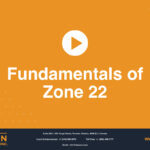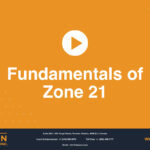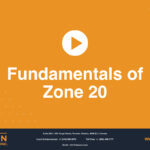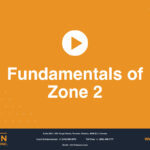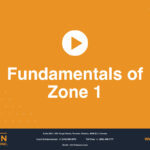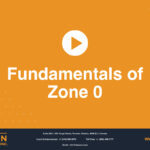Fundamentals of Class II, Division 2
Dust explosive atmospheres are hazardous due to the presence of combustible dusts, fibres or flyings. Small combustible dust particles can burn easily and rapidly; a sufficient quantity of them can cause an explosion.
Dust explosive atmospheres are classified in North America, using two different classification systems: the Class-division and the Zone system.
There are three classified areas in the Zone system that relate to dust explosive areas: Zone 20, 21 and 22. In the Class-division system, Class 2 Division 1, and Class 2 Division 2 are both used to classify dust explosive areas. This animation focuses on Class 2 Division 2.
Class 2, Division 2 is defined as a location in which combustible dust may be suspended in the air as a result of infrequent malfunctioning of handling or processing equipment. In another words, under normal operating conditions, there would not be sufficient dust present to interfere with the operation of electrical or other equipment. It is unlikely that an explosive dust/air mixture will occur in this location.
An explosive atmosphere might only be expected in the event of malfunctions such those which result in whirled-up dust. Division 2 refers to the entire area where dusts may be suspended in the air if processing equipment malfunctions.
Electrical equipment is often installed in locations where there are explosive dusts present. Dust is further classified in three groups in North America. Dust Group E, electrically conductive, combustible metal dust, may be found where metals are processed, for example. Dust Group F, combustible dusts other than metal, are found where lumber and wood products are stored. And Dust Group G, solid particles including fibres, may be found where food and grain are handled.
Electrical devices used in these Class 2 locations must therefore be designed, constructed, and certified in compliance with relevant safety Standards in order to be safe to use in such hazardous locations. As indicated in the Standards, in order to be certified as compliant with Class 2, Division 2, electrical products must be protected by one or more of the following protection techniques: dust-tight enclosures, hermetically sealed or sealed devices, non-incendive, and purging and pressurization Type Z. Also, equipment that is suitable for use in Class 2, Division 1 and Zone 20, 21 or 22 in North America is permitted to be installed in a Class 2, Division 2 area.
Request a Consultation
Complete the form below to get started.

